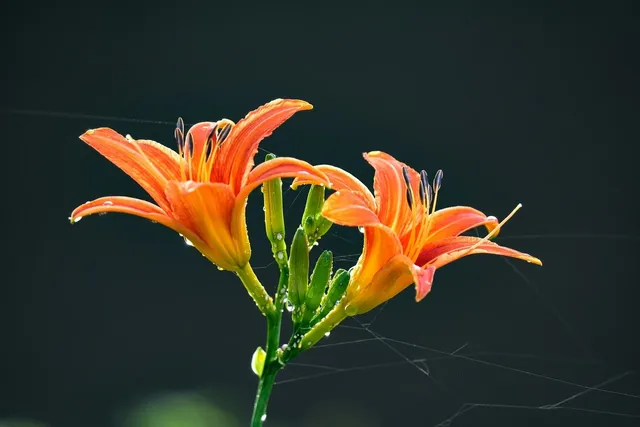The Serene Legacy of the Bamboo Garden: A Historical Narrative
The Serene Legacy of the Bamboo Garden: A Historical Narrative
In a small village nestled in the misty mountains of East Asia, the Bamboo Garden was not just a place but a living testament to the harmony between nature and humanity. This verdant sanctuary, which came to be known as the Bamboo Garden, has a rich history that intertwines with the lives and traditions of the villagers, spanning centuries and embodying the spirit of resilience and tranquility.

Origins in Ancient Times
The origins of the Bamboo Garden trace back to the 3rd century BCE during the reign of Emperor Qing. It is said that a wandering monk named Li Wei, seeking solace and enlightenment, discovered a secluded valley brimming with wild bamboo. Entranced by the serenity and the gentle rustling of the bamboo leaves, Li Wei decided to settle there. He built a small hermitage and cultivated the bamboo, believing it to be a symbol of strength and flexibility.

Li Wei’s hermitage soon became a spiritual haven for those seeking wisdom and peace. Over time, the hermitage transformed into a small monastery, and the bamboo grove grew into a meticulously curated garden. The monks who lived there developed a deep understanding of bamboo, using it for everything from building materials to crafting intricate artworks and musical instruments. The Bamboo Garden became a center of learning and a repository of knowledge about this remarkable plant.
The Golden Age of the Bamboo Garden
By the 8th century, during the Tang Dynasty, the Bamboo Garden had gained fame far beyond the village. It attracted scholars, poets, and artists who found inspiration in its serene beauty. The legendary poet Li Bai visited the garden and composed some of his finest verses while sitting under the towering bamboo stalks. His poems immortalized the garden in the annals of Chinese literature, describing it as a place where "the earth and heavens embrace in a dance of green and gold."

The villagers, recognizing the cultural and spiritual significance of the garden, took great care in its preservation. They developed intricate irrigation systems to ensure the bamboo thrived, even during droughts. They also began a tradition of planting a new bamboo shoot for every child born in the village, symbolizing growth and continuity. The garden became a living chronicle of the village’s lineage and history.
Trials and Tribulations
The Bamboo Garden faced numerous challenges over the centuries. During the Mongol invasions of the 13th century, the garden was nearly destroyed. The invaders set fire to the bamboo in an attempt to root out hiding villagers and monks. However, the resilient nature of bamboo allowed it to regenerate quickly. The villagers and monks rebuilt the garden, and it stood as a symbol of their perseverance.
In the 19th century, the Bamboo Garden encountered a different kind of threat. With the rise of industrialization, nearby forests were being cleared for timber, and there were plans to harvest the bamboo for commercial purposes. The villagers, understanding the garden's value beyond mere profit, banded together to protect it. They lobbied the local government and even staged peaceful protests to safeguard their cherished garden. Their efforts paid off when the garden was declared a protected area, ensuring its survival for future generations.
The Bamboo Garden in Modern Times
In the 20th century, as the world became more interconnected, the Bamboo Garden’s fame spread globally. Botanists and environmentalists from around the world visited to study its unique ecosystem. The garden became a focal point for bamboo research, contributing to sustainable practices and the promotion of bamboo as an eco-friendly resource.
The village itself transformed into a model of sustainable living. Inspired by the principles embodied by the Bamboo Garden, the villagers adopted eco-friendly practices in agriculture, energy use, and waste management. They established a bamboo craft cooperative, creating beautiful, artisanal products that were sold both locally and internationally. This not only provided economic stability but also reinforced their cultural heritage.
Tourism, too, became an important aspect of the village's economy. Visitors from around the world came to experience the tranquil beauty of the Bamboo Garden. The villagers, in turn, created programs to educate tourists about the history, cultural significance, and ecological importance of bamboo. This helped foster a global appreciation for bamboo and the values it represented.
The Bamboo Garden's Cultural Impact
The Bamboo Garden’s influence extended beyond its physical boundaries. It became a symbol of resilience, adaptability, and harmony with nature. Artists continued to draw inspiration from its beauty, and its imagery appeared in paintings, music, and literature across the globe. It was featured in documentaries and films, highlighting its unique history and the harmonious relationship between the villagers and their natural environment.
Every year, the village hosts the Bamboo Festival, celebrating the garden's enduring legacy. The festival features traditional music and dance, bamboo craft workshops, and storytelling sessions where elders recount the history and legends associated with the garden. It is a time of joy and reflection, reinforcing the community’s connection to their heritage and their commitment to preserving the Bamboo Garden.
Conclusion
The history of the Bamboo Garden is a testament to the enduring bond between humanity and nature. From its humble beginnings as a hermitage for a wandering monk to its status as a global symbol of sustainability and cultural heritage, the Bamboo Garden stands as a living legacy. It reminds us of the importance of preserving our natural world, embracing resilience in the face of adversity, and fostering a deep connection to our cultural roots.
The Bamboo Garden is not just a place; it is a story of growth, renewal, and the timeless dance between the earth and its inhabitants. It is a testament to the power of nature to inspire, heal, and unite us across generations and cultures.
| Community | My Blog |
|---|---|
| Category | Writing |
| Device | Samsung |
| Caption | @zidan07 |
| Location | Bangladesh |
Upvoted! Thank you for supporting witness @jswit.